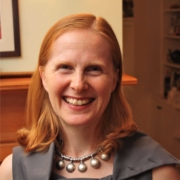Prachi Srivastava
Educational planning in a time of coronavirus
Today I talk with Prachi Srivastava about educational planning in a time of coronavirus. Over 1.5 billion children are out of school. What does that mean for educational delivery and assessment? And are there issues of equity we need to consider?
Prachi Srivastava is an Associate Professor specializing in education and international development at Western University in Canada. In our conversation, we talk about what the global south can teach the global north when it comes to planning in emergencies.
Citation: Srivastava, Prachi, interview with Will Brehm, FreshEd, 194, podcast audio, March 30, 2020. https://freshedpodcast.com/prachisrivastava/
Will Brehm 2:12
Prachi Srivastava, welcome to FreshEd.
Prachi Srivastava 2:14
Thanks, Will. It’s great to be here with you.
Will Brehm 2:16
So, I want to talk today about the Coronavirus, or COVID-19, and education specifically. Today is Friday, March 27, when we’re speaking. Can you give me a sense, as of today, how many children do we know are out of school because of COVID-19?
Prachi Srivastava 2:35
Thanks, Will. The situation is developing very quickly. And as of the numbers reported by UNESCO on the 25th of March, which are the latest data we have, the number of affected learners is roughly 1.5 billion and that is equivalent to roughly 87% of enrolled learners. And that is a number that’s extracted by UNESCO looking at the country wide closures in 165 countries as of today or as of yesterday. I think it’s also important to remember that prior to the pandemic there were already 250 million children who were out of school. These were the children that are persistently out of school because of entrenched inequities. The number also does not include localized school closures. So, there are a number of countries -for example, Canada, the US, Russia, Brazil, Australia- that have localized school closures. So, if we really think about the true number, it’s probably higher than what we see. From my rough estimates of just population data- this is a little bit different probably than the statistics that have been used to calculate the number of enrolled learners here-but from my rough estimates of population data in the demographic group of 5-19 year old’s, there are roughly 1.9 billion children and youth of that population. So, we can see, this is affecting almost every child and youth on the planet.
Will Brehm 4:13
Is there a regional distribution here, or is this truly global?
Prachi Srivastava 4:17
This is truly global. Usually, we look to see what the regional disparities are but this is truly global. There are a few countries in Africa, a few countries in Asia, a few countries in the Middle East, where right now the map is not showing that there are closures, but really, we’re talking about a handful of countries at this point. It really is global.
Will Brehm 4:38
And why are they closing? Like even in countries that might not have many cases of the coronavirus. Is it simply a precautionary measure to get kids home to self-isolate? What are some of the reasons that are being used to close schools outside of say the really big hotspots like New York City or in Italy or in other regions of the world, even in the UK where I am, the schools are closed.
Prachi Srivastava 5:04
Yeah, that’s a really good question. So, different countries have taken different approaches. China was the first country to institute school closures. And that was about a month ago now. And if we see how quickly for example, the situation has evolved. So, March 4, which is only three weeks ago -feels like a lifetime ago- was the first report that UNESCO put out on school closures and from what I recall, I think that was around 290 million children or so that they were reporting at that time. And now we can see just three weeks later, the impact being so much greater. So, different countries have taken different approaches. Some countries saw even one or two cases and said, we would like to close our schools because we want to minimize impact. Other countries have been less quick to respond in that way. I think the UK is the famous example of one country which, I think only on Friday was it really instituted if I’m not mistaken.
Will Brehm 6:03
That’s correct.
Prachi Srivastava 6:04
Yeah. So, these are different steps that countries have taken. Canada, in terms of timing here, in Ontario in particular, a lot of the schools were going on March Break around the 12th or 13th of March and the provincial government here said, the schools will be obviously closed between the March Break and then an extra week afterwards, which would be the following week. Very recently, our provincial government has announced that it’s unlikely that we’re going to open on April 6, which was the original date, and likely to be extended further. Some countries, or some states, even in the US have issued calls to say that it’s unlikely that the children are actually going to return this year. And so, it’s all developing as we speak. There is controversy on using school closures as a mechanism to limit exposure. I don’t want to say controversy with a big “C” but there are some diverging opinions, especially in countries where the initial number of cases has been apparently low. I’m not an epidemiologist, so I can’t really talk to the rate of transmission and how quickly that is in terms of testing, but we do know that if countries have been testing pretty extensively, that the reported number of cases are probably more accurate than in countries where the testing is not as extensive or hasn’t really begun in any great measure.
So, in that sense, there are two ways of looking at this. In countries that have low numbers of reported cases, do we take that low number as an indication that most likely, there are many more cases? And that’s probably the more stringent view and perhaps the view that policymakers would want to take because you don’t want to take chances with a virus that’s seen to be very contagious. But there was initially some diverging opinion on whether or not school closures in particular are a good response because when the Ebola crisis broke out, there were instances where closing schools were shown to have decreased or negative impacts, especially on children that are coming from vulnerable and precarious circumstances. So, what we saw was an increase in physical and sexual abuse. We saw an increase in pregnancies -so again, if we’re talking about teenage pregnancies. I don’t know why we call it teenage pregnancy and not child pregnancy because these are still children. We saw an increase in that which obviously is related to other security concerns. We saw an increase in psychosocial harm, and we saw an increase in negative impacts of exclusion from education on the children that are coming from the most vulnerable backgrounds. So, children that are coming from social backgrounds in which they may be unable to access or supplement education at home, we saw learning suffers, and the usual kind of effects of that.
Will Brehm 7:23
But at the same time, it almost seems like those are outcomes of closing schools. And yes, they’re negative and very problematic. But at the same time, closing schools probably did have the effect of minimizing the spread of viruses, right? Which was the intention of doing so.
Prachi Srivastava 9:43
Well…so that is where there is a little bit of evidence to show that in instances where very rigorous -I am not arguing that we should not close schools. I’m just trying to kind of give the full picture that where countries have taken this measure that there’s still discussion. It’s not a de facto end game, right? But I’m just trying to give a more nuanced perspective.
Will Brehm 10:11
And I appreciate it because it really is quite interesting. The issue of when you close a school there are these sort of “knock-on effects”.
Prachi Srivastava 10:18
Right. So, the chief of education for UNICEF wrote a really good op-ed in the LA Times about ten days ago on the 13th of March. And he cited the example to say, where there were very extensive sanitization measures, and where schools were provided with guidance on how to sanitize and keep those facilities clean at the time of Ebola, that in fact, the rate of infection did not go up. Ebola and COVID -and again, I’m not an epidemiologist, so I can’t really comment on the similarities and the differences between these two viruses and how for example, closing or non-closing, what is the transmission and how contagious those are. So, I can’t comment on that. I really don’t want to say- but that was a comment that was made in terms of school closures. But from my own perspective, I do think that in terms of minimizing contact, and in terms of the kind of capacity issues that we are seeing in our healthcare systems around the world globally, that I think school closures are probably a good first response in the situation that we’re in, which is actually much different, I think, in terms of spread and speed of spread than Ebola. But again, that’s probably a better question for a health expert. But in my own view, I think that this is probably the way that we should look at it for the time being.
Will Brehm 11:54
Right. And it seems like a lot of ministers of education, for instance, have agreed and have decided to shut schools down right. If the numbers are something like 87% of children are out of school or even higher, perhaps. So, I guess the question then is: what on earth are these children doing outside of school? Do we have any sense yet of what children are doing at home or wherever they end up living?
Prachi Srivastava 12:19
Yeah, I mean, this is a really good question. And this is where I have been focusing my efforts to try and understand what the response is beyond school closures. So, I think the first response is, okay, we have to close schools because we have to minimize spread. And that seems relatively a sensible thing to do given what we’re seeing. But there is less information, or the information is evolving, in terms of, now that we’ve closed schools, okay, what happens. There are a number of countries and I do on this point have to say that I’ve been really impressed by UNESCO and IIEP in terms of how quickly they’ve mobilized to provide information to anyone, really, who wants it on their website in terms of what’s happening. So, I’m getting a lot of my information from UNESCO and from what I see from their portals is that there are a number of countries -I think, yesterday I counted, there are about 45 countries- that have instituted online portals for children and for teachers to, in different capacity and doing different things. In some instances, it’s just a list of resources. In some instances, it’s an online portal that is tied very closely to the home domestic curriculum and that is also being used to stream instruction, whether that’s live or asynchronous. And that has been one kind of response.
Another response that I’ve seen, which is not as IT-driven, would be instituting perhaps radio programming, or thinking about that at least and instituting television programming. And what we see with the radio and television programming is that these are methods that have been used, particularly in the global south and other regions to reach populations that do not have connectivity, that might not have electricity. You know, we forget radio -if you have a transistor that runs on a battery, you can access frequencies on radio. And so there have been some really innovative programs in the past that have been, for example, targeting nomadic pastoral communities in different parts of sub-Saharan Africa through radio transmission because these communities are not based in any one location for very long amounts of time. They will have in certain instances temporary habitations. They might not have access to public services as we would in a formal settlement. And so, this is a really innovative approach. We forget that some of the older technologies are sometimes more accessible than the newer technologies that we -at least in the Western and in the I want to say middle class, but actually, it’s usually the top 10th percentile in many Global South countries- that we just take for granted.
Will Brehm 15:31
Yeah, so like, instead of going for Zoom, go for the radio. It seems like an old technology but in fact, there’s a long history of distance education working through radio.
Prachi Srivastava 15:43
Yes, distance education through radio. Distance education through a correspondence school. I mean, the UK, I mean, you’re based there right now, is a great example -the Open University is a great example of an institution. And similarly, in India IGNOU which is the Indira Gandhi National Open University modeled very closely on the Open University model is a great example of providing higher education and lifelong learning through correspondence before, really computers were a mass consumption tool. But there are modules that you get sent out materials, you read the materials, you respond, you have a tutor, perhaps you connect via phone, and you respond to those assignments and you complete them. And at the end of it, you can get a degree. I mean, it’s a great model.
Will Brehm 16:33
So, how would say a policymaker decide between these different models, right? I mean, what would they have to be weighing up in your mind when they think, okay, COVID-19 has displaced a lot of children from schools. We want to keep learning going, what’s the best method to do so? How would they go about planning that solution?
Prachi Srivastava 16:54
That’s a good question. I think. I think again, this is my opinion. This is my assessment of the situation. I don’t have data really to back this up. But my feeling in terms of how I’ve seen the situation evolve is that policymakers, and governments, and organizations, international organizations that have been involved in dealing with conflict and emergency and dealing with- even in stable, politically stable context, but in the South, where we are talking about- very huge disparities in terms of access to technologies and education, I think they will approach or might have those models a little bit more readily accessible to them, at least in their planning portfolio and maybe even in their kind of psyche of what happens in education. And so, they might have more options that they consider as a de facto potential to reach different groups. I feel that in this particular moment where we’re at, the countries of the West or the North, or however you want to call them, the high income countries, particularly in the West, I don’t think we have that same experience. I don’t think we have that same capacity to weigh some of those options into our planning primarily because for the most part, specifically, if we’re talking about Canada, the US, the UK. You know, these countries where for the most part, we have had relative peace and stability on our own soil, even if we have been involved in conflicts and they’ve been in other countries, but on our own soil, and we’ve had a relatively very good level of access. Of course, there are disparities and of course, there are communities even in our own countries that have been traditionally left out and this is also shocking and very bad, but traditionally as a society, you know, societies, we have not had to face that.
And also, because most of us have an assumption that we have access to high speed internet. It’s an assumption. In fact, now this is throwing up that there are many communities, even in Canada, even in the US, even in the UK that don’t have access to that. But it’s these are assumptions that we have taken for granted. So, our first response has been, let’s close schools and let’s turn learning online. Let’s shift everything online. The clearest example of that has been in the higher education or university sector in which most universities that took that decision, many of them took that decision even before our own ministries made a formal statement, but most universities that took that decision, took them almost overnight. I mean, we have you know, examples and even in my own university where, you know, we have examples where the universities were given two or three days, professors were given two or three days to just convert everything unto online platforms. And some universities were set up for that, because perhaps we were already engaging in, you know, solid models of distance education through online learning. For example, at Western in my faculty, we were doing that. But even within the university, there might be faculties that didn’t do that. After having been kind of forced to do that, we realized that there are many students even in higher education who depend on the university infrastructure to access the high speed internet or to access online resources. And that has been, I think, a wakeup call that, you know, even in higher education, where, technically I would say that between primary, secondary, and tertiary education and higher education, university education, perhaps the infrastructure was relatively better developed in higher education than the other two sectors. Even in those instances, we’re seeing actually, you know, there’s quite a bit of inequities there.
So, when we then think about it, doing this mass for primary and secondary education, there’s an additional burden on families, right? You’re actually now also having to implicate families in providing not only that technological capacity, but also parents to supervise and to be part of the learning process. Parents who have been told that they must work from home, if they still have a job, right? There are so many other things that are going on simultaneously. Parents who might be in situations where they’re having to work at home, and are maybe even in critical jobs and have to work at home and then are also having to supervise the learning of their children. And because their children are not independent learners the way they would be if they were in higher education, they require more support. And then of course, there are financial, all sorts of financial implications right now, in terms of whether or not they’ll have a job, whether or not they have a job, whether or not they have income coming in? How are they going to sustain themselves? And of course, in certain countries, we are seeing benefit packages now rolling out, but all of this when the family and the home becomes the site of every provision, we have to take that in terms of what that means, particularly for learners that are coming from precarious backgrounds.
Will Brehm 22:22
Yeah, I mean, it seems like there’s, in precarious backgrounds or in more unstable conditions where the necessity is ensuring that there’s food on the table every day, learning almost sort of gets put down the hierarchy. It’s not as important as survival in many cases. So, what you said earlier was really fascinating is that many countries in the Global South had lots of experience with providing education in emergencies or in post conflict societies, or even in conflict societies. So, I wonder, what sort of lessons can the Global South basically give the Global North as many of these countries, as you said, the US, the UK, Canada, Australia are, for the first time in many years, in many decades, are experiencing a level of uncertainty and conflict that is unusual, that is causing chaos, and that policymakers simply have no idea how to operate within. I mean, there must be some lessons that the Global South can offer.
Prachi Srivastava 23:25
There are, and again, all of this is fraught. It’s so hard to speak in general terms because of the nuance. The devil is really in the detail, right? So, just to give you a little bit of background, I used to work in conflict-affected contexts myself. That’s how I started my career. Almost 20 years -actually, more than 20 years ago now. I started working in Albania, Bosnia, and Kosovo during the Kosovo conflict and I was involved with initially helping to design psychosocial programming for refugee children in Albania and Bosnia who were coming in as refugees. And then later on, moved to Kosovo, where I led the first minority program for Roman and Ashkalian children and this was lots of community building and became a pilot program, which then got extended throughout what is now the country. And then later on, moved into the UN mission and was designing policy around this very issue, minority integration and education in a newly developing education system for an eventual country -at the time it was not yet recognized as a country. So, that’s where a lot of my immediate thoughts came to that. To those experiences, to that literature that has actually developed post those conflicts. In the late ’90s, there was very little, almost no, real literature on this. And since then, we see over the last 20 years, there is a literature that has developed, there’s a field of study that has developed around education in emergencies and conflict-affected contexts, and post-conflict reconstruction. And I do think that for many of us, those would be good places to start, even as researchers. To actually start reading some of that work. And to not think that just because the work was in Afghanistan, or is in Haiti that it’s not relevant, that the lessons are not relevant.
The biggest lesson that I would think about is coordination. And coordination is a fraught term. This is a contested term. It’s contested, even regarding whether or not coordination actually happens. But in a situation of addressing an emergency or conflict the main agencies have to find a way of coordinating. This is not usually a simple process. There’s a lot of tension and struggle involved. But the main agencies will generally find a way of coordinating -WHO, UNICEF, UNHCR- they’ll find a way of coordinating and they will also find a way of saying, okay, let’s set together a planning forum or a commission and let’s figure out how we’re actually going to deliver basic essential services during this time, whether it’s in a IDP camp, a camp for internally displaced persons, or whether it’s in a refugee camp, or whether it is more broadly in a time of kind of, “reconstruction”. But they will have to find a way of coordinating among themselves and coordinating with the government -the local government. I think that much of the planning in “our own countries”, and I’m very much speaking about countries in the West and the North has seen a prolonged period of being siloed, of actually being quite partitioned. And as a result, you might have some coordination with the Ministry of Finance because you know that that’s where your money is coming from if you’re a ministry of education, and you might have some coordination, perhaps, with some other ministries that are relevant to some niche kind of part of your operations. But what we tend to see is real kind of siloed approaches to education planning. And I think that in a situation that we’re in, where what we’re seeing is that this pandemic is affecting every sphere of social life, every sector, every person, this is not an approach that we can take in education. So, for example, are the ministries of health and education cooperating? If so, how are they cooperating? Are the ministries of health and/or if, where they have labor or social welfare ministries, are they cooperating? Child Welfare, infrastructure, all of these are the kinds of areas that when we’re talking about, say, a development project or a question of conflict, response, response and emergency, you have to think about infrastructure, children, women, labor, employment, social security, education is part of all of that. I mean it should be considered part of all of that. Do we see that all the time in every response? Probably not. But the idea of coordination, or at least at an attempt of coordination, is something that we do talk about a little bit more. And I’m not seeing that so much here.
The other problem -it’s not a problem, it’s a structural challenge- is that in some countries, in many countries, education systems might be decentralized to a level where local authorities or states or provinces might have very different structures of their own internal education systems. What education looks like in one state or province or local region might not be the same in another one in the same country. There may or may not be a federal or national ministry or department or coordinating body for education, which means that making a coordinated response becomes difficult. And that requires a coordinating body in and of itself, right. So how do we, should we come together? How should we come together to have some kind of a coordinated response? That doesn’t mean that it has to be a nationalized response, which is exactly the same for all because that will not work in every country given the huge disparities that we will see in different regions, and states, and provinces, but at least: are there channels of communication? Are there things that we are all facing that are somewhat general, and that we can discuss? So, these are the kinds of, I think, efforts that in planning and in administration that in times of conflict and wide-scale emergency we are forced to tackle. And I’m not saying that they’re always tackled in the best way, or that they are unproblematic, or that they’re not contested, but the mental models guiding that are somehow floating around. If you’re working in the sector in emergency and humanitarian response, there’s this idea of coordination that’s floating around, and we should try to get there, which might be missing.
Will Brehm 30:23
Right, right. Which might be missing in some other countries that haven’t had too much conflict. So, do you think that this pandemic will fundamentally change education systems worldwide?
Prachi Srivastava 30:35
I mean, I think I think the pandemic is going to change a lot of our systems. How permanent those changes are going to be of course, it remains to be seen. We are so at the early stages of this situation. I tend to follow from a theoretical perspective very closely, new institutional economic theory and the ideas there are that where you have huge unprecedented change, much of that change is not sustained over time. That some of that change will be institutionalized, but much of it will not. Because at some point we will revert back to path dependency or the way we used to do things, because it’s what we know and it’s how we tend to rationalize the world. I think what is unique about this moment in history that we’re at is that it is not an overstatement to say that the whole world is experiencing unprecedented change. If we just look at even school closures. If we just take that as an example, right? To have almost 90% of kids not in school, this is unprecedented. We just have never experienced that. So, maybe some of the impact of that will be more sustained than in a short term rebellion in one context in one state somewhere, right? I do think that education will be more valued. The reason I say that is because for the first time, at least in the West, we as citizens, especially those of us who are parents, are directly implicated in the education of our children. We are seeing what that means.
I think we are also coming from a moment where for many years, there have been certain measures that have been instituted in many countries that have undercut the value of education. Devaluing teachers as professionals, taking away certain kinds of resources from our systems. There are many, many examples that we can go into. But I think it’s easier to make those arguments when the mass population is not directly implicated. Because you’re not there. You’re not part of the nitty gritty, every day, oh my god, this is what it takes to educate my child or a young person. I think people are actually recognizing that. So, my hope, because despite the quite critical stuff I write, I’m actually a quite hopeful person. So, my hope is that some of that will be retained. That we will be able to make stronger arguments for adequately funding education, for adequately providing resources to our education systems. I’m not just talking about schools, I’m talking about all the support that goes around functioning systems of education. And so perhaps some of that will be retained. Perhaps we’ll be able to make stronger arguments.
We have to remember that one quarter of countries, so that’s 25% of countries, prior to entering the pandemic were not reaching the education finance targets. So, there are global targets that have been set for education financing that say that every country should be spending roughly 6% of their GDP, or 15% to 20% of their domestic budgets on education. And about 25% of countries were already not doing that. Okay, so we’re already coming into this pandemic with many countries who are not able to meet the education financing targets, or they’re not willing to -though that’s a different conversation. Is it are they able to or are they not willing to? But they’re already underfunded. And then even amongst the countries that are meeting those targets, I’ve been doing some analysis looking at education financing since 2002, which was the beginning of the Education for All (EFA) goals. And we did some disaggregated analysis and looked at the data and found that the ones that were meeting the targets tended to be the countries that are high income or high middle income countries, right? So, you can actually see the disparity in terms of financing. So, I hope that we’re able to kind of generate more momentum for that.
Will Brehm 35:15
Well, I hope so too. And it’ll be really interesting to see what happens with this pandemic going forward and its implications on education. Prachi Srivastava, thank you so much for joining FreshEd. It really was a pleasure talking today.
Prachi Srivastava 35:29
Thank you Will, and it was lovely talking with you.









